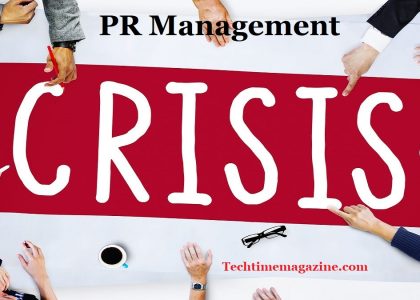Defining Employee Experience
Employee experience is a broad term that encapsulates every aspect of an individual’s role within an organization—from their first contact as a potential recruit to their final day as a departing employee. It is characterized by employees’ perceptions and feelings about their data-driven decisions work, informed by the environment, culture, and technology provided by their employer. A positive employee experience fosters a sense of belonging, motivation, and satisfaction, which are crucial for retaining talent and maintaining a competitive edge in today’s fast-paced market.
Moreover, employee experience extends beyond tangible factors like salary and benefits to include intangible aspects such as workplace relationships and opportunities for growth. Organizations that prioritize employee experience often see improvements in productivity, innovation, and overall organizational performance. Employers may develop a highly effective, devoted workforce to accomplish company goals by fostering a positive and stimulating work environment.
The Building Blocks of Experience
Employee experience is underpinned by various elements, which include the physical workspace, work-life balance, recognition, professional growth, and the quality of managerial relationships. Every aspect is vital to the way that workers view their company. When harmoniously integrated, they create an environment where employees can thrive, contributing their best work and fostering innovation.
Additionally, communication channels and transparency are essential building blocks of employee experience, allowing for clear expectations and feedback loops. Opportunities for skill development and training also contribute significantly to employee satisfaction and engagement. By addressing these elements comprehensively, organizations can create a holistic employee experience that attracts, retains, and motivates top talent.
Employee Experience and Company Culture
At the heart of employee experience lies the company culture—a set of shared values, beliefs, and practices that define the workplace environment. Culture impacts every employee experience, from daily interactions and decision-making processes to the team’s overall sense of purpose and engagement. Creating a positive culture is a continuous process that needs input from all organizational levels.
A strong company culture shapes how employees perceive their work and influences their behavior and attitudes toward colleagues and tasks. A vibrant culture fosters collaboration, creativity, and a sense of belonging among employees when aligned with organizational goals and values. By prioritizing a positive culture, companies can enhance employee satisfaction, productivity, and organizational success.
Technology’s Role in Shaping Employee Experience
Technology has revolutionized the workplace, affecting how and where we work. The right technological tools can streamline tasks, facilitate communication, and allow for greater flexibility—critical ingredients for a fulfilling experience. Organizations that leverage technology effectively empower their employees to work more efficiently and maintain a better work-life balance.
It’s not just about providing the latest gadgets; it’s also about ensuring systems are intuitive and enhance rather than hinder workflow. As remote work becomes increasingly common, using collaborative platforms and digital tools becomes even more critical to maintaining a cohesive and connected workforce.
Moreover, technology plays a vital role in promoting employee engagement and well-being by offering opportunities for remote collaboration, virtual team building, and wellness initiatives. Organizations can empower employees to adapt and thrive in digital work environments by investing in user-friendly technologies and providing comprehensive training. Additionally, data analytics tools enable HR teams to gather insights into employee sentiment and experiences, allowing for targeted improvements and interventions to enhance overall satisfaction.
Measuring the Impact of Experience
Just as customer experience is pivotal for business success, so is experience for organizational health. Measuring its impact can be challenging, but it is necessary to understand its effects on retention, performance, and satisfaction. Organizations often use a combination of surveys, interviews, and data analytics to gauge employee sentiment and identify areas that require attention.
Collecting feedback is only the beginning. The actual test of an organization’s commitment to experience lies in how it uses that feedback to drive change, remove obstacles, and foster a work environment that attracts and retains top talent.
Additionally, organizations can track key performance indicators (KPIs) related to experience, such as turnover rates, employee engagement scores, and productivity metrics. By correlating these metrics with initiatives aimed at improving employee experience, organizations can assess the effectiveness of their efforts and make data-driven decisions for continuous improvement. A holistic approach to measuring and improving employee experience ultimately contributes to a positive workplace culture and strengthens the organization’s competitive advantage in the market.
Where Employee Experience Meets Engagement
Employee engagement, often used interchangeably with employee experience, results from a positive experience. Engagement signifies the emotional and psychological commitment to one’s job and company. It’s a state in which employees are fully absorbed and enthusiastic about their work, putting in more effort than the minimum required. Engaged employees are motivated to contribute to organizational success and feel aligned with their company’s objectives.
Best Practices for Cultivating an Exceptional Experience
Developing an outstanding employee experience doesn’t happen overnight—it’s a sustained endeavor that involves the whole organization. Leadership must set the tone, investing in an infrastructure that supports the desired culture and experience. Encouraging open data-driven decisions dialogue, offering a clear path for growth, providing meaningful work, and fostering community inside and outside the workplace are among the best practices for cultivating an exceptional experience.
It’s a synergistic process where the company’s success directly reflects the satisfaction and well-being of its employees. By nurturing these relationships with care and intention, businesses can create a thriving ecosystem that benefits everyone involved.









